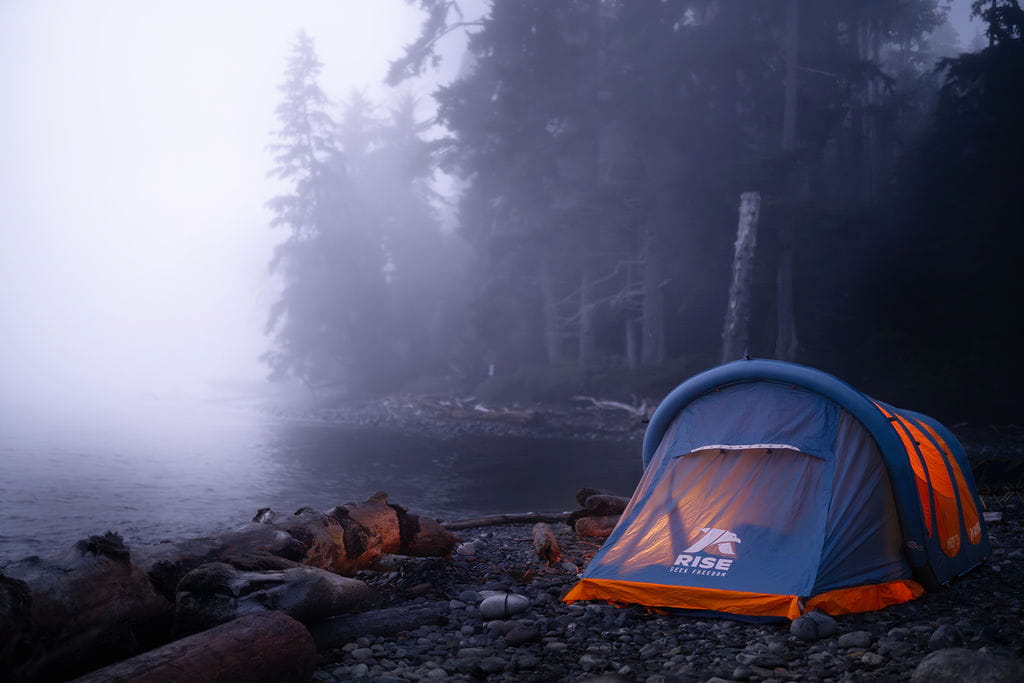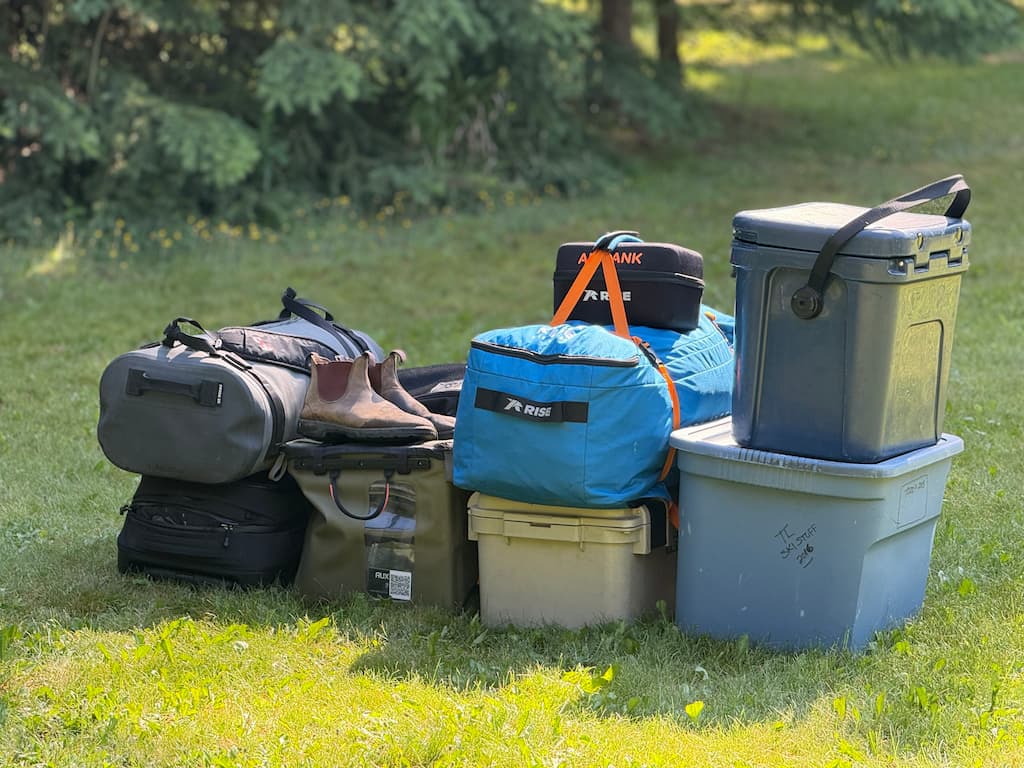Dew, Droplets & Condensation
The Real Guide to Staying Dry Outdoors
There are only two kinds of campers: the ones who’ve woken up in a tent that feels like a swamp, and the ones who know how not to. Because nothing kills a morning faster than a dripping ceiling, and that creeping suspicion your tent’s about as waterproof as a paper bag.
The good news? Most of the time, your gear isn’t betraying you—it’s just physics doing its thing. Let’s break down the soggy mysteries.

Dew vs. Rain: Nature’s Way
Rain is of course obvious. Big drops, loud on the fly, makes you question why you didn’t pack an extra tarp.
Dew, on the other hand, creeps in slowly and surely, in full stealth mode. It happens when warm, moist air collides with cooler surfaces overnight. Grass, tents, sleeping bags—basically everything becomes wet.
Don’t confuse dew on the outside of your tent with a leak. It’s unavoidable, just Mother Nature doing her thing.
Condensation: The Invisible Culprit
This is the camper’s classic “my tent leaks” complaint. But it’s not rain sneaking through—it's your own breath and body heat. It’s true that humans exhale and perspire about 400ml to 1 liter of water overnight (varies by person, climate, and activity). Most of this is lost through breathing (water vapor in your breath) and ‘insensible perspiration’ (skin evaporation you don’t notice). So when you’ve got a couple of campers zipped into a small tent, that moisture builds fast.
When that warm, moist air meets a cold tent wall, it condenses into droplets. With single-wall tents (like the AirNEST) this can feel worse because there is no “separation layer.” Single wall tents need airflow to reduce condensation, hence the reason we’ve made huge mesh doors both front and back that you can adjust depending on the temperature outside.
Double-wall set-ups on the other hand, have inner mesh and an outer rainfly which creates a gap for the tent to “breathe.”
 This is dew. Nothing you can really dew about it.
This is dew. Nothing you can really dew about it.
How to Wake Up Dry
-
Ventilation is everything.
Crack BOTH front and back door zippers, open the vestibule vent—airflow stops that water-vapour from building into droplets. -
Pitch matters.
Set up where air can move: avoid low valleys where cold air pools, and try to avoid the lake’s edge. -
Use the right materials.
Cheap nylon tents sag and hold water when temps drop. High-quality silpoly (like the 3000HH material on the AirNEST) resists sag, beads moisture, and breathes enough to keep the inside feeling drier. -
Keep wet gear out.
Shoes, jackets, dogs—park them in the vestibule. Less moisture inside means less condensation. -
Accept some dew as part of the deal.
Wipe it down, shake it out, and move on. Camping is messy. That’s why coffee tastes better outside. -
Pro Trick. Place a heated rock or two inside the vestibule just before you go to bed. This will keep things toasty and dry all night long!
 In the morning, prop up your tent like this to let it dry out.
In the morning, prop up your tent like this to let it dry out.
The AirNEST Edge
When we were building the AirNEST, this was top of mind. Nobody wants to roll out of bed feeling like they’ve just stepped out of a sauna.. That’s why we built it with waterproof 3000HH silpoly, added overhanging roofs for airflow, and designed the whole thing to stay taut (no sagging, no pooling). In short—you’ll still get the sunrise dew on the outside, but inside will be fine…just don’t touch the edges too much.
The Last Drop
The goal isn’t to avoid moisture completely (that’s impossible outdoors)—it’s to manage it so you stay comfortable and actually enjoy that first cup of camp coffee instead of trying to dry your sleeping bag over the fire.
 Leave the doors cracked open like this to let your tent breathe at night
Leave the doors cracked open like this to let your tent breathe at night




Leave a comment